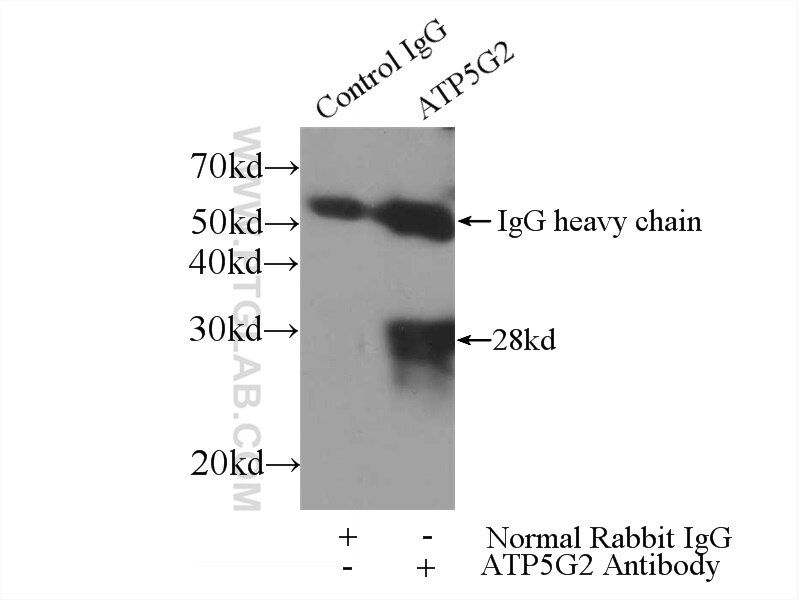ATP5G2-Specific Polyclonal antibody
ATP5G2-Specific Polyclonal Antibody for IP,ELISA
Host / Isotype
Rabbit / IgG
Reactivity
human, mouse
Applications
IP,ELISA
Conjugate
Unconjugated
Cat no : 19785-1-AP
Synonyms
Validation Data Gallery
Tested Applications
| Positive IP detected in | HEK-293 cells |
Recommended dilution
| Application | Dilution |
|---|---|
| Immunoprecipitation (IP) | IP : 0.5-4.0 ug for 1.0-3.0 mg of total protein lysate |
| It is recommended that this reagent should be titrated in each testing system to obtain optimal results. | |
| Sample-dependent, Check data in validation data gallery. | |
Product Information
19785-1-AP targets ATP5G2-Specific in IP,ELISA applications and shows reactivity with human, mouse samples.
| Tested Reactivity | human, mouse |
| Host / Isotype | Rabbit / IgG |
| Class | Polyclonal |
| Type | Antibody |
| Immunogen | Peptide |
| Full Name | ATP synthase, H+ transporting, mitochondrial F0 complex, subunit C2 (subunit 9) |
| Calculated Molecular Weight | 21 kDa |
| Observed Molecular Weight | 28 kDa |
| GenBank Accession Number | NM_005176 |
| Gene Symbol | ATP5G2 |
| Gene ID (NCBI) | 517 |
| RRID | AB_2878606 |
| Conjugate | Unconjugated |
| Form | Liquid |
| Purification Method | Antigen affinity purification |
| Storage Buffer | PBS with 0.02% sodium azide and 50% glycerol pH 7.3. |
| Storage Conditions | Store at -20°C. Stable for one year after shipment. Aliquoting is unnecessary for -20oC storage. 20ul sizes contain 0.1% BSA. |
Background Information
ATP5G2, also named as ATPase protein 9 and ATPase subunit c, belongs to the ATPase C chain family. Mitochondrial membrane ATP synthase (F1F0 ATP synthase or Complex V) produces ATP from ADP in the presence of a proton gradient across the membrane which is generated by electron transport complexes of the respiratory chain. ATP5G2 is the major protein stored in the storage bodies of animals or humans affected with ceroid lipofuscinosis (Batten disease). This antibody is specific to ATP5G2.
Protocols
| Product Specific Protocols | |
|---|---|
| IP protocol for ATP5G2-Specific antibody 19785-1-AP | Download protocol |
| Standard Protocols | |
|---|---|
| Click here to view our Standard Protocols |


